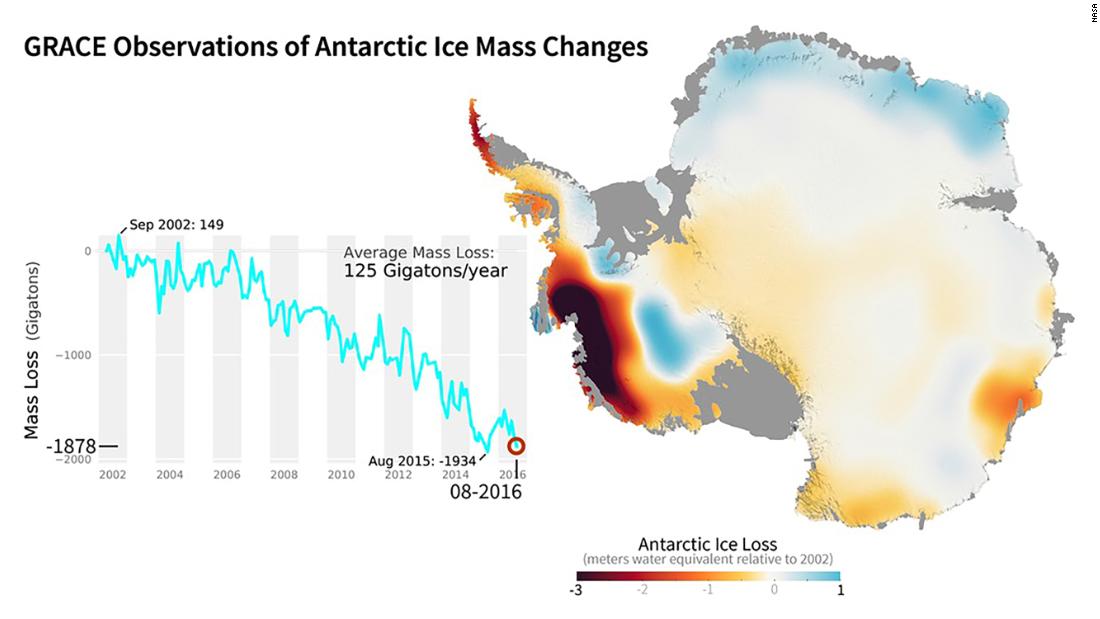HuffPost – Politics
The Next Recession Is Really Gonna Suck
The extra help unemployed people got during the Great Recession has emboldened states to mistreat them.
By Arthur Delaney February 10, 2018
 JI SUB JEONG / HUFFPOST
JI SUB JEONG / HUFFPOST
WASHINGTON ― When the next recession comes, many people who lose their jobs will have a harder time getting unemployment insurance, an important lifeline for most Americans. In several states, these people could have to pee in cups just to qualify.
Those who don’t get benefits will have to settle for the sort of fake jobs our economy produces in abundance — a contract job in an Amazon fulfillment center, say, or a gig delivering groceries to people who still have careers.
Talk of a recession is in the air again after the recent wobble in the stock market. It’s highly likely the next recession will occur in the coming three years, while President Donald Trump is still in office. Maybe it’ll happen as a result of his inflation-baiting tax bill. Maybe it’ll have something to do with excessive consumer debt. We don’t know what the cause will be, but we do have some idea of how Americans will experience the next sustained economic slump. Since the Great Recession, during which the GOP repeatedly if grudgingly went along with former President Barack Obama to extend unemployment insurance, Republicans on both the state and federal level have pushed to make benefits less generous and harder to get.
Meanwhile, the holes they’ve created in the safety net will be filled by so-called “alternative work arrangements” — gigs — which offer fewer protections for workers than full-time jobs.
By design, America is ill-prepared for its next recession, and it’s going to suck.
 YURI GRIPAS / REUTERS
YURI GRIPAS / REUTERS
The president of the United States will deny that the bad jobs numbers are real.
It’s the U.S. government that measures economic growth and the unemployment rate, but it’s actually up to a private nonprofit organization called the National Bureau of Economic Research to tell us when a recession has begun. Since the 1920s, this organization has had a committee of eggheads looking at a variety of indicators, especially personal income levels, unemployment rates and the gross domestic product, to determine when a recession has started.
A recession starts after economic activity has reached its peak. Right when things are better than ever is when they’re about to get worse. The decline in business conditions has to affect the whole economy; it can’t just be a single-sector slump, like the one Amazon has wrought among retailers. But you won’t know the recession has started until later, because the NBER waits until the government has finished its data revisions, which happens over a period of months. It wasn’t until 2008 that the organization announced that the last recession had begun in 2007.
There have been 11 recessions since World War II. The current economic expansion began in mid-2009, making it the third longest in history, and it can’t last forever.
Expansions don’t just die of old age. One thing that can trigger recessions is the Federal Reserve hiking interest rates to quell inflation. The Federal Reserve is currently in the process of raising rates, but inflation is still low and most economists see no cause for concern in the immediate future ― though economists are not exactly great at predicting what will happen.
“When wage and price pressures develop, that’s when the clock starts to tick,” said Mark Zandi, an economist with Moody’s Analytics, a financial analysis provider.
Upward pressure on wages has begun to develop. The official unemployment rate is still falling, and it has been at or below 5 percent for about two years ― a level that has traditionally triggered inflation fears. But economists can point to a range of other measures, such as reduced labor force participation, that suggests the labor market is still out of whack.With interest rates already very low, the Fed has wanted to bring them up partly to ward off phantom inflation and partly just so it can lower them again when the next recession comes around. Because it will.
One possible table-setter for a recession, Zandi said, is a huge tax cut that increases the size of the federal budget deficit — something very much like the contents of the Republican tax bill that Trump signed in December. In such a scenario all the extra money in taxpayer’s hands could cause the economy to overheat, leading the Federal Reserve to hike interest rates faster in an effort to stave off inflation.
“If the tax cuts are deficit financed, that is going to juice the economy and it will overheat, significantly raising the odds of a recession early in the next decade,” Zandi said.
Most economists are less confident the tax cuts will juice the economy quite so much, but they generally do anticipate an aggressive Fed response. “Interest rates are projected to rise in the short term because the legislation would boost aggregate demand and output, leading the Federal Reserve to increase interest rates to avoid a surge in inflation,” the nonpartisan Tax Policy Center said in its December 2017 analysis of the economic effects of the new law.
Outgoing Federal Reserve chair Janet Yellen, for her part, kept the Fed’s plans cryptic in the wake of the tax bill. “I think my colleagues and I are in line with the general expectation among most economists that the type of tax changes that are likely to be enacted would tend to provide some modest lift to GDP growth in the coming years,” she said.
 AARON BERNSTEIN / REUTERS
AARON BERNSTEIN / REUTERS
Republicans on both the state and federal level have pushed to make benefits less generous and harder to get.
While federal and state governments run an array of programs that respond to economic need, nothing is more important when mass layoffs roll around than unemployment insurance, which is not handed out to just anyone. Only people who are laid off through no fault of their own, and who have well-established work histories over the previous year, are eligible. Benefits are designed to replace about 46 percent of the person’s lost wages.
The average unemployment benefit ranged from $330 to $350 per week since 2016, according to The Department of Labor, making it more valuable than other programs responding to economic need. Food stamps, for instance, might provide that much money over the course of a month. The generosity of the benefit serves two purposes: one is to protect layoff victims themselves, and the other is to prevent a broader deflationary spiral caused by desperate people accepting terrible wages at jobs for which they’re not really suited.
After the Great Recession got underway, while hundreds of thousands of people were losing their jobs each month, Congress started increasing the duration of unemployment insurance for people who’d used up the standard 26 weeks of benefits that states provide. Republican foot-dragging over the cost of the benefits led to a huge fight in 2010, with former Sen. Jim Bunning (R-Ky.) infamously responding to Democratic pleas by saying “tough shit” on the Senate floor.
Since then, Congress has quietly allowed those benefits to expire while statehouse Republicans ― aghast that Barack Obama gave their constituents up to 99 weeks of combined state and federal unemployment insurance ― have hacked away at their own unemployment programs. Nine states reduced benefit duration from the usual 26 weeks, and many others have apparently gotten more aggressive in checking up on claimants to make sure they’re continuing to look for work, which has always been an eligibility requirement.
As a result, the rate at which unemployed Americans receive layoff compensation overall has fallen from about 36 percent in 2007 to about 28 percent in 2017, according to data from The Department of Labor. Wayne Vroman, an associate with the Urban Institute, said a big reason for the decline is that states are finding ways to kick unemployed people off benefits after they’ve already been deemed eligible. His research shows a big increase in “nonseparation determinations.” These are instances of states investigating whether someone is continuing to meet eligibility requirements by doing things like writing down the names and addresses of businesses where they’ve applied for work on forms to state work agencies.
“When agencies have undertaken nonseparation determinations in recent years, the outcome has become much more likely to be a denial than in 1989 or 1999,” Vroman wrote in a paper that will be published this year. For instance, denial rates for determinations examining a person’s availability for work ― their willingness to take a job ― which is a requirement of benefit receipt, were 64 percent in 1989 and 83 percent in 2016.
Unemployment compensation is a state-federal program financed by payroll taxes on employers. When a lot of people lose their jobs and state unemployment trust funds run dry, states have to borrow money and sometimes increase payroll taxes ― something that makes Republican lawmakers enthusiastic about trimming benefits. (Most extra weeks of federal benefits are fully funded by the federal government and created by Congress on an ad-hoc basis.)
States are still smarting from the Great Recession. At the beginning of last year, only 21 state trust funds had achieved what the Labor Department considers a minimum level of solvency. If they can’t catch up before layoffs hit, there will be political pressure to follow the new path that other states have taken to reduce benefits. Lawmakers in Kentucky, which has a poor solvency rating, are currently considering proposals to make the state’s unemployment system more like Florida’s, currently one of the worst.
It’s an old pattern. After the recession of the early 1980s, changes in state benefits helped reduce the proportion of unemployed workers receiving compensation from 50 percent in 1980 to 37 percent in 1990, according to political scientist Paul Pierson’s 1994 book Dismantling the Welfare State?
Josh Bivens, an economist with the Economic Policy Institute, a liberal think tank, said the country isn’t well prepared for the next recession.
“We have managed to make UI incredibly non-protective,” Bivens said. “If we want the UI system to not be a complete joke in the next recession, it’s going to depend on Congress and the president.”
But Congress and the president might be more interested in urine tests than UI. Since about 2011, Republicans at the state and federal level have been trying to make drug tests a requirement for welfare, food stamps and unemployment insurance. In 2012, Congress passed a law giving states the right to drug test some unemployment claimants, but the measure let the Obama Labor Department decide who would be subjected to the test, resulting in a narrowly written regulation that Republicans said wouldn’t catch anybody.
Republicans scrapped the regulation last year, and the Trump administration has said it will release a new one sometime soon. Wisconsin, Texas and Mississippi have already passed drug test laws and are just waiting for a green light from the Labor Department.
 TERO VESALAINEN VIA GETTY IMAGES
TERO VESALAINEN VIA GETTY IMAGES
Republicans at the state and federal level have been trying to make drug tests a requirement for welfare, food stamps and unemployment insurance.
How will a new recession play out under this new unemployment benefits regime? The recent hurricanes offer a preview. Storms that battered Texas and Florida threw tens of thousands of people out of work. Storm victims are supposed to be eligible for unemployment benefits and can file through the regular process.
In Florida, it’s not an easy process. The state overhauled its unemployment system in 2011, requiring layoff victims to file claims online and even (for a time) take a math and reading test. Since 2007, before the last recession started, the percentage of unemployed Floridians who receive compensation plunged from 32 percent to 9 percent, almost the lowest rate of coverage in the nation.
Anthony Di Biagio is the co-owner of a residential and commercial cleaning service in Cape Coral, Florida. In the aftermath of Hurricane Irma he was unable to work because some of his clients’ homes and businesses were inaccessible. As a business owner, Di Biagio was ineligible for regular unemployment compensation, but perfectly eligible for the special disaster assistance provided through the state unemployment system.
After spending 40 minutes initiating his application online, Di Biagio learned it would take some real vigilance to actually receive the benefits. He’d have to request payments every two weeks and register with an online service called “Employ Florida Marketplace” as though he were looking for a job ― which, as a business owner, he was not.
“Unfortunately, this is counterproductive for me because I know that my unemployment is temporary and I’ll most likely only need benefits for 1-2 months,” he said in a Facebook message. “Even if I found a job with EFM, I couldn’t commit to it because I already own a company which plans to be fully operational as soon as possible.”
The problems stem partly from the state’s apparent desire to discourage people from obtaining benefits and partly from plain old private sector incompetence. Florida hired Deloitte Consulting to overhaul the website and complained loudly about the contractor’s work, which in 2013 and 2014 the state blamed for claimants being unable to receive benefits in timely fashion. Handling claims through an automated system is supposed to save money on staff, but two other states that hired the firm to overhaul electronic benefits delivery have also encountered massive benefits delays and other problems.
(A Deloitte Consulting spokesman said unemployment system in all three states have been fully functional since 2014. “Unemployed workers in all of the states in which we have worked are receiving the unemployment benefits for which they’re eligible, in a timely fashion and in accordance with state and federal laws,” he said.)
“The states that run these really threadbare programs, it’s not the economic stabilizer you would want for a family facing job loss for their main wage earner,” George Wentworth, a senior staff attorney with the National Employment Law Project, said in an interview. “It’s the most important program for the average American who loses their job. That’s why there are standards [in federal law] saying as soon as you’re eligible you should be getting payment within three weeks of filing that claim.”
The Florida Department of Economic Opportunity declined to comment.
One thing that could actually make the next recession less miserable than its predecessor is “work sharing.” Thirty states currently offer work-sharing or “short-time compensation” programs that allow companies to reduce a group of employees’ hours instead of doing layoffs. The state then uses its unemployment insurance trust fund to compensate the workers for the missing hours.
Congress doled out $100 million for states to set up work-sharing programs in 2012, and several states designed new programs as a result. A Labor Department-commissioned study released in 2016 found that of the more than 2,000 businesses that enrolled in a state work-sharing program from 2008 through 2013, most had a favorable experience and more than 80 percent said they would sign up again.
It’s such a good idea that of course nobody has heard of it.
Economists who are familiar with work sharing say it’s ridiculous how unfamiliar the concept is to most people considering its bipartisan backing. One flaw of the policy is that it’s entirely up to employers to sign up for the state-sponsored programs, even though its workers whose livelihoods are at stake.
“It would be neat if employees could initiate this as well,” economist Lonnie Golden of Penn State Abington said. “The information is just not out there.”
 CHARLES PLATIAU / REUTERS
CHARLES PLATIAU / REUTERS
Alternative work arrangements are more commonly along the lines of those Amazon warehouse jobs than they are for online platforms.
Another distinguishing feature of the next recession will be the prevalence of fake jobs with no benefits. Since 2005, the percentage of the workforce toiling in “alternative work arrangements,” such as freelance or subcontractor gigs, has risen from 10 to almost 16 percent, according to 2016 research by Lawrence Katz and Alan Krueger, economists at Harvard and Princeton, respectively. Less than 1 percent of jobs are for online platforms like Uber or TaskRabbit; alternative work arrangements are more commonly along the lines of those Amazon warehouse jobs where you don’t actually work for Amazon.
This kind of work accounted for all of the net employment growth from 2010 to 2015 and has spread throughout occupations. The advantage is that these jobs are easier to get. The disadvantages are that they’re less likely to come with benefits; they’re less secure; and the schedules are more erratic.
And people working in such jobs may be ineligible for unemployment, since if they’re not actual employees of the firm they work for their state won’t have W2 forms on file reflecting their earnings. For people who don’t have benefits, the “flexibility” of contract work may be their only lifeline.
Katz and Krueger found in a follow-up paper that people who’d suffered unemployment were significantly more likely to find themselves in an alternative work arrangement after the Great Recession ― something that will happen even more next time the economy tanks.
“We would certainly expect a jump in people, as they lose out on possibilities of more traditional jobs, moving into alternative work,” Katz said.
Then there’s the Trump factor. When the mass layoffs return and the unemployment rate rises the newly jobless will discover that not only have they lost their livelihoods, but they have also become fake news.
The president of the United States will deny that the bad jobs numbers are real. Just as candidate Trump insisted the official unemployment rate was 10 times higher than the Obama administration said, President Trump won’t hesitate to cast doubt on his own government’s rate when it starts rising.
Who cares? Well, the tens of millions of Americans who will churn through the unemployment system are going to care. One of the worst things about being unemployed, aside from the fact that you have no money, is that you lose a routine that essentially connects you to society through daily interactions with other people. And since American culture closely links your value as a human to your career, it can be difficult to maintain self respect ― which helps explain the link between joblessness and suicide. Massive numbers of alienated and vulnerable people already living a surreal existence will be explicitly told they’re not even real.
Ask anyone who suffered more than a brief spell of joblessness in the wake of the Great Recession, which officially lasted from December 2007 to June 2009, how it felt to keep hearing that the economy was improving. Ask Donald Witkowski.
“I haven’t believed a word they told me in years,” Witkowski told HuffPost. And that’s how he felt even though the president at the time took pains to say that, despite economic progress, many people had been left behind ― a kind of nuance Trump doesn’t do.
Witkowski, 59, lost his job in 2011 when the paper mill in Whiting, Wisconsin, closed down. He’d worked there for decades. Now, still unemployed and receiving disability benefits, he’s alienated from his government even after having gotten nearly a year of unemployment insurance thanks to a series of federal extensions. Whatever goes wrong with the next recession, he said, will be worse than whatever the statistics say. He has a prediction for the next downturn, and it’s based less on economics than on his experience of the last one.
“It won’t be a recession,” he said. “I think it will be a total collapse.”
Correction: This article initially stated the Great Recession lasted from December 2007 to January 2009. It lasted from December 2007 to June 2009.
Do you have information you want to share with HuffPost? Here’s how. Arthur Delaney, Senior Reporter, HuffPost

 An Iowa State University student collects water infiltration data in a field with cover crops, as part of a Leopold Center supported research project studying the long-term impact of cereal rye on cash crop yields. (Photo courtesy The Leopold Center)
An Iowa State University student collects water infiltration data in a field with cover crops, as part of a Leopold Center supported research project studying the long-term impact of cereal rye on cash crop yields. (Photo courtesy The Leopold Center) A Leopold Center-funded a grant project supported Congera Alex, originally from Burundi, shown here transplanting his crops in early spring in a community garden in Des Moines, Iowa. (Photo courtesy The Leopold Center)
A Leopold Center-funded a grant project supported Congera Alex, originally from Burundi, shown here transplanting his crops in early spring in a community garden in Des Moines, Iowa. (Photo courtesy The Leopold Center)
 No-till farming started as a way to keep costs down for conventional farmers in danger of losing their land. Now it has become a subculture and a way of life for outsider farmers all over rural America.
No-till farming started as a way to keep costs down for conventional farmers in danger of losing their land. Now it has become a subculture and a way of life for outsider farmers all over rural America.  Jimmy Emmons on his farm in Leedey, Oklahoma. Courtesy of No-till in the Plains.
Jimmy Emmons on his farm in Leedey, Oklahoma. Courtesy of No-till in the Plains.
 Photo of dark, carbon-rich soil courtesy of North Central Sustainable Agriculture Research and Education.
Photo of dark, carbon-rich soil courtesy of North Central Sustainable Agriculture Research and Education. Photo courtesy of No-till on the Plains.
Photo courtesy of No-till on the Plains. Soybeans coming up in a rye cover crop. Photo by Lander Legge for USDA Natural Resources Conservation Service (NRCS).
Soybeans coming up in a rye cover crop. Photo by Lander Legge for USDA Natural Resources Conservation Service (NRCS).
 Changes in sea level observed between 1992 and 2014. Orange/red colors represent higher sea levels, while blue colors show where sea levels are lower.
Changes in sea level observed between 1992 and 2014. Orange/red colors represent higher sea levels, while blue colors show where sea levels are lower. Nerem provided this chart showing sea level projections to 2100 using the newly calculated acceleration rate.
Nerem provided this chart showing sea level projections to 2100 using the newly calculated acceleration rate. NASA’s GRACE mission used satellites to measure changes in ice mass. This image shows areas of Antarctica that gained or lost ice between 2002 and 2016.
NASA’s GRACE mission used satellites to measure changes in ice mass. This image shows areas of Antarctica that gained or lost ice between 2002 and 2016. President Donald Trump looks on before signing a proclamation to honor Dr. Martin Luther King, Jr. Day in the White House on Jan. 12, 2018 in Washington, D.C. (Photo: Olivier Douliery, Abaca Press, TNS)
President Donald Trump looks on before signing a proclamation to honor Dr. Martin Luther King, Jr. Day in the White House on Jan. 12, 2018 in Washington, D.C. (Photo: Olivier Douliery, Abaca Press, TNS) Credit: Michael S. Williamson/The Washington Post via Getty Images
Credit: Michael S. Williamson/The Washington Post via Getty Images JI SUB JEONG / HUFFPOST
JI SUB JEONG / HUFFPOST YURI GRIPAS / REUTERS
YURI GRIPAS / REUTERS AARON BERNSTEIN / REUTERS
AARON BERNSTEIN / REUTERS TERO VESALAINEN VIA GETTY IMAGES
TERO VESALAINEN VIA GETTY IMAGES CHARLES PLATIAU / REUTERS
CHARLES PLATIAU / REUTERS